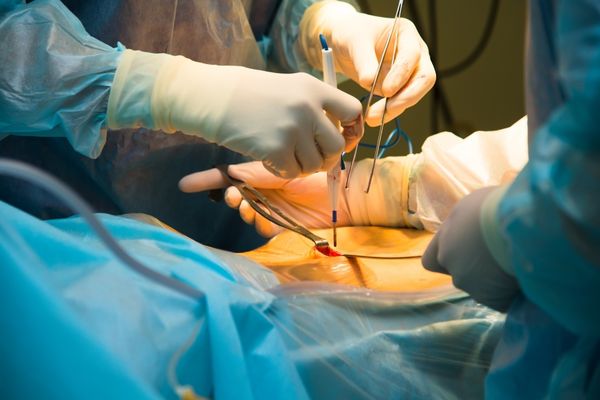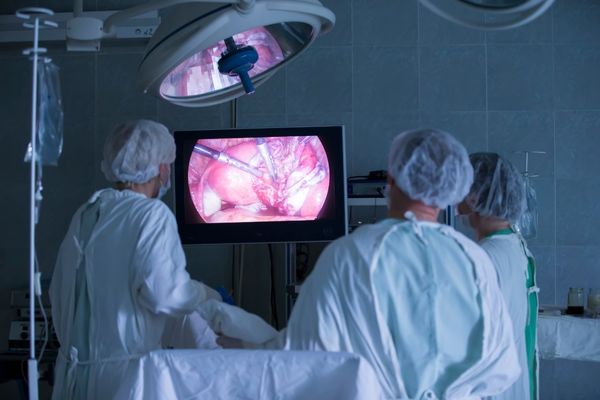Laparoscopy in Turkey
Treatment of Laparoscopic Surgery in at Vitale Hospital


What is Laparoscopy?
Laparoscopy is a modern, minimally invasive surgical procedure used to diagnose and treat conditions within the abdomen and pelvis. Instead of large incisions, laparoscopy involves making small cuts through which a thin, tube-like instrument called a laparoscope is inserted. This tool has a camera that projects images onto a screen, allowing surgeons to examine or perform surgery on internal organs with high precision.
Table of Contents
ToggleLaparoscopy is widely preferred for its benefits, including reduced scarring, faster recovery, and less pain after the procedure. It is commonly used for diagnosing abdominal pain, removing the gallbladder, treating endometriosis, and more.
Why is Laparoscopy Performed?
Doctors may recommend laparoscopy for various reasons. It’s often used for both diagnostic and surgical purposes. Here are a few common reasons why patients might undergo laparoscopy:
- Gallbladder Removal: Laparoscopy is widely used to remove gallstones or the entire gallbladder.
- Appendectomy: To remove an inflamed appendix.
- Endometriosis Diagnosis and Treatment: Allows doctors to treat or confirm cases of endometriosis.
- Hernia Repair: Effective for minimally invasive hernia treatment.
Benefits of Laparoscopic Surgery:
Laparoscopy offers several advantages over traditional open surgery:
- Small incisions mean smaller scars.
- Most patients recover faster and experience less pain post-surgery.
- With smaller wounds, the risk of infections is reduced.
What Surgeries Can Be Performed Laparoscopically for Women’s Diseases?
Laparoscopy has become a valuable tool in treating various gynecological conditions, offering a minimally invasive approach for many women’s health concerns. Here are some common surgeries that can be performed laparoscopically for women’s diseases:
Purpose: To diagnose and treat endometriosis, where tissue similar to the uterine lining grows outside the uterus, causing pain and infertility.
Procedure: Surgeons can locate and remove or destroy endometrial tissue, reducing symptoms and improving fertility.
Purpose: To remove ovarian cysts that may cause pain, hormonal imbalances, or fertility issues.
Procedure: A laparoscopic approach allows the surgeon to remove the cyst while preserving as much healthy ovarian tissue as possible, which is essential for fertility.
Purpose: For removing fibroids, which are non-cancerous growths in or on the uterus that can cause pain, heavy periods, and fertility issues.
Procedure: Laparoscopic myomectomy removes fibroids with small incisions, minimizing recovery time and preserving the uterus.
Purpose: To remove the uterus, often due to conditions like fibroids, endometriosis, chronic pelvic pain, or certain cancers.
Procedure: Laparoscopic hysterectomy involves small incisions, making it less invasive and allowing for faster recovery compared to traditional open surgery.
Purpose: To treat pelvic adhesions, which are bands of scar tissue that can form after surgery, infection, or endometriosis, causing pain or infertility.
Procedure: Laparoscopy helps locate and carefully remove adhesions, improving organ function and relieving discomfort.
Purpose: To treat pelvic adhesions, which are bands of scar tissue that can form after surgery, infection, or endometriosis, causing pain or infertility.
Procedure: Laparoscopy helps locate and carefully remove adhesions, improving organ function and relieving discomfort.
Purpose: To provide a permanent method of birth control by blocking or cutting the fallopian tubes.
Procedure: Laparoscopic tubal ligation is minimally invasive, usually allowing for same-day discharge and quick recovery.
Purpose: For staging and diagnosing gynecological cancers, such as ovarian or endometrial cancer.
Procedure: Laparoscopy can help determine the extent of cancer spread and allow for tissue biopsies without open surgery.
How is Laparoscopy Performed?
Before the surgery, patients are given general anesthesia to ensure comfort and painlessness during the procedure. The surgeon then makes a few small cuts in the abdomen to insert the laparoscope and other necessary instruments. The camera on the laparoscope provides a clear view of the internal area on a monitor, allowing the surgeon to diagnose or treat the condition effectively.
The Laparoscopic Surgery Process in Turkey
Turkey has become a popular destination for laparoscopic surgery due to its high standards of care and affordability. Patients worldwide come here for treatments in accredited hospitals staffed by experienced surgeons. Turkish hospitals are known for their advanced facilities and patient-centered approach, ensuring that each step of your medical journey is comfortable and reassuring.
Why Choose Turkey for Laparoscopic Surgery?
Choosing Turkey for laparoscopy comes with several advantages:
- Qualified, experienced doctors with years of practice.
- Hospitals equipped with the latest technology.
- Quality treatment at lower costs compared to many countries.
Safety and Quality Standards
Turkish hospitals adhere to international standards of safety and quality. Many facilities are accredited by international healthcare organizations, ensuring you receive the highest care standards.
What Should be Considered After Laparoscopy?
- Use doctor-recommended pain relievers to ease discomfort.
- Expect shoulder pain to subside within a few days after the procedure.
- Keep the incision sites clean and dry to reduce infection risk.
- Do not scratch the incision sites or apply any products without consulting your doctor.
- Rest during the initial days, and take light walks to prevent blood clots.
- Refrain from lifting heavy objects or engaging in strenuous activities for at least two weeks.
- Start with light, easy-to-digest foods to avoid nausea.
- Drink plenty of water to aid healing and prevent constipation.
- Contact your doctor if you experience a high fever, as it could indicate an infection.
- Watch for unusual redness, swelling, or discharge at the incision sites.
- Go to all scheduled follow-ups to monitor your recovery.
- Reach out to your doctor immediately if you notice any unusual symptoms or persistent pain.
Laparoscopic Surgery Cost in Turkey
The cost of laparoscopic surgery in Turkey is significantly lower than in many other countries. While the price can vary depending on the specific procedure, the hospital, and the surgeon, patients generally find it to be highly affordable. The average cost includes hospital fees, doctor’s fees, and anesthesia. Turkey’s competitive pricing and quality care make it an attractive option for medical tourists.
Doctors
Op. Dr. Nalan CİHANGİR
Gynecology and Obstetrics Specialist

Op. Dr. Ali Fuat ŞENGÖR
Gynecology and Obstetrics Specialist

Op. Dr. M. Taner KILIÇ
Gynecology and Obstetrics Specialist

Op. Dr. Sema MÜLAYİM
Gynecology and Obstetrics Specialist

Op. Dr. Esra ÜNAL
Gynecology and Obstetrics Specialist

Op. Dr. R. Hakan GÜRALP
Gynecology and Obstetrics Specialist

FAQ
Laparoscopy is a minimally invasive procedure that allows doctors to view or treat organs in the abdomen with small incisions. It’s commonly used for diagnosing abdominal pain, treating gallbladder issues, and addressing gynecological conditions.
Most patients recover within a week, although full recovery may take a few weeks depending on the procedure. Light activity is usually possible within a few days.
Laparoscopy is generally less painful than traditional surgery due to smaller incisions. Some patients experience mild pain or discomfort, which is manageable with prescribed pain relievers.
The cost of laparoscopy in Turkey varies but is typically lower than in many other countries. Prices depend on factors like the hospital, the complexity of the procedure, and surgeon fees.
Look for accredited hospitals with experienced surgeons and modern facilities. It’s also helpful to review patient testimonials and check if the hospital offers international patient services.


